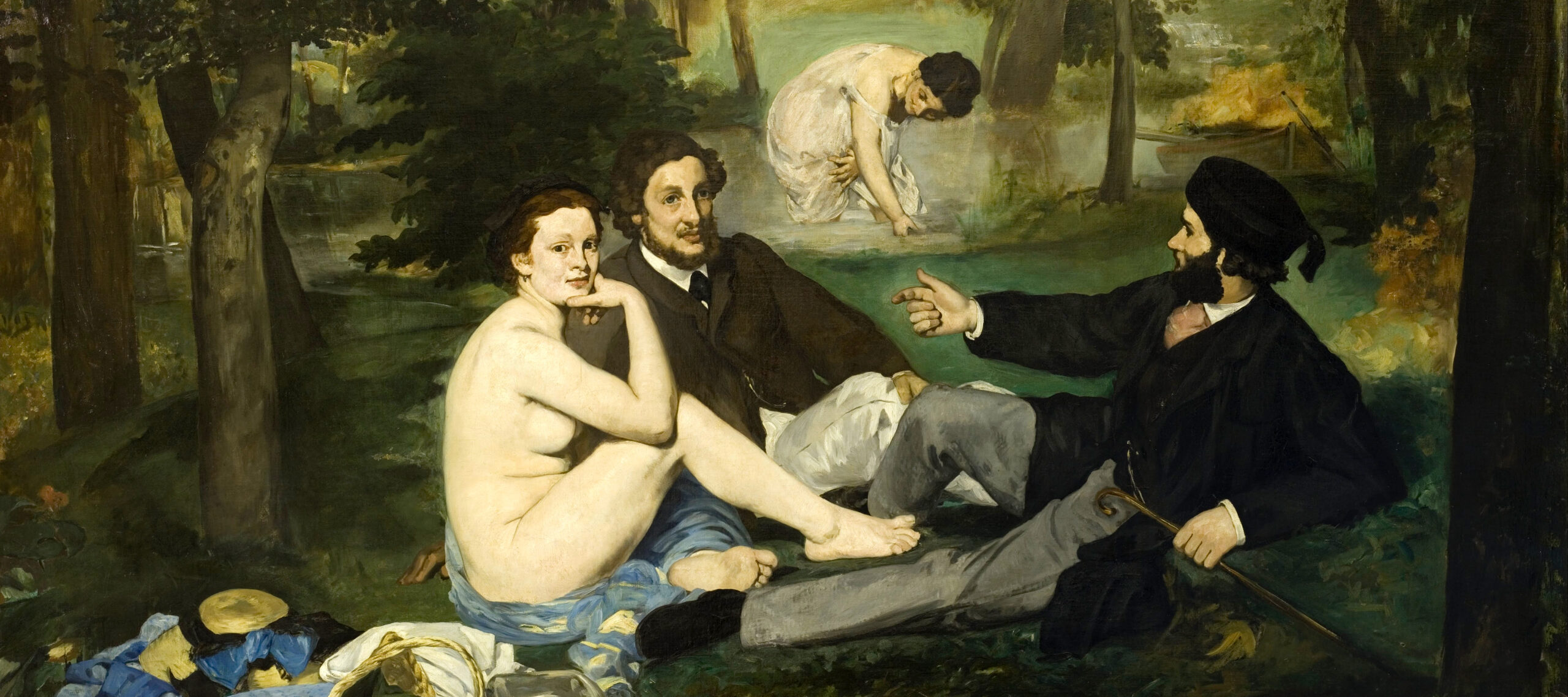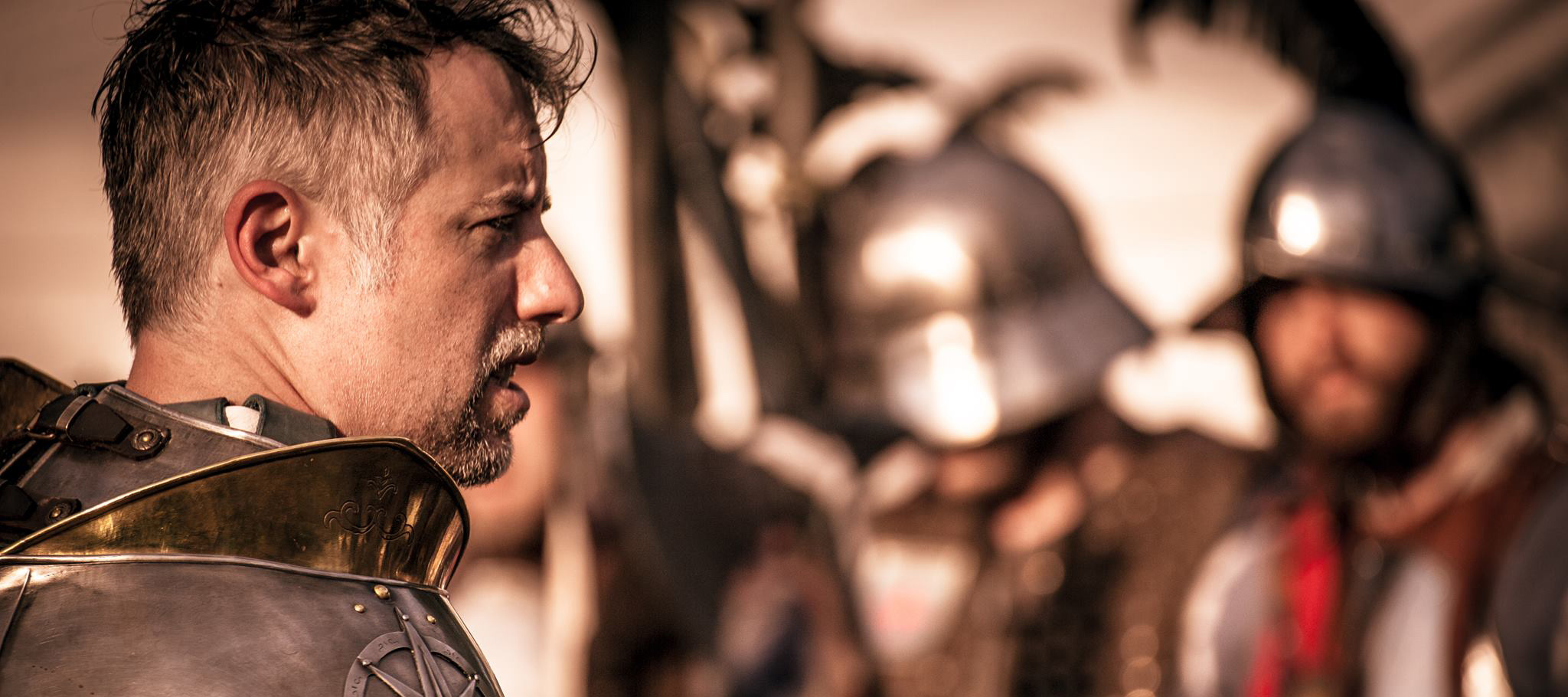The original version of this glossary was published in the 2019 book Larp Design: Creating Role-Play Experiences.
- 360° illusion
- Larp design idea where what you see is what you get. The environment is perceived as authentic, everything works as it should affording participants to engage in authentic activity for real, and participants perform immersive role-play.
- Act (noun)
- A segment of the larp runtime that has some kind of thematic unity, comparable to an act in a play.
- Act break
- The breaks between runtime when runtime is divided into acts. Often used to pause, reflect, and calibrate play.
- Agency
- The capacity of a participant or a character to act in a meaningful manner in a given environment, to have the possibility to impact the proceedings.
- Alibi
- The things that enable a person to (role-)play and to do things they would never do in everyday life while in character. Alibi is value neutral (“It says so in the character description”) and can be used in a positive (“We have all agreed to explore these themes together in a physical way”) or a negative way (“I was drunk at the time”).
- Amusement park design
- In the context of larp design this means creating a larp where there are pre-planned ‘rides’, story units, for the characters to explore.
- Bespoke design
- Approaching every larp as a new work and designing everything from scratch. As opposed to either iterating on a local tradition, or using the same larp system, such as Mind’s Eye Theatre, in multiple larps.
- Blackbox
- A genre of larp played with minimalist setting, with carefully curated props, and controlled light and sound. Often played in theatre black boxes. A room in a longform larp devoted to acting out scenes out of temporal sequence is also sometimes called blackbox, although a better term for that is meta room.
- Bleed
- When the feelings of the character impact on the participant, or vice versa.
- Blockbuster larp
- Longform larp that targets an international audience, features an expensive venue, high participation fee, and is hyped before and after. They usually have a high concept idea, often based on existing intellectual property. Originally, the term was critical of this type of larps.
- Boffer
- A padded weapon. Historically made out of foam covered with duct tape, nowadays often made out of latex.
- Boffer larp
- A larp where fighting modeled with boffers is a central feature.
- Briefing
- The part of the event before runtime where designers instruct participants about the larp.
- Calibration
- Negotiations relating to playstyle and personal boundaries, usually between participants.
- Campaign
- A pre-planned series of larps set in the same fictional world where events from one larp impact events in another.
- Chamber larp
- Shorter larps, with their length measured in hours, often taking place in a small venue and with participants in single or low double digits. Low demands for scenography and costuming make chamber larps easier to package and restage.
- Character
- The fictional persona a participant portrays during runtime. Sometimes also used to refer to the character description that is an inspiration for the character actually played.
- Character alibi
- The alibi provided by portraying a character.
- Character description
- The material on which a participant bases their performance of a character during runtime. Usually takes the form of text describing character background, motivation, goals, and contacts. In some traditions these can be very long and individually tailored, in others they are not used at all.
- Close to home
- Playing with themes, situation, experiences, or personae that one is very familiar with from everyday life.
- Collaborative-style
- Larps that have no victory condition and encourage participants to share and co-create, rather than conceal information and best each other.
- Competitive-style
- Larps in which there is a victory condition that only limited numbers of participants can achieve.
- Consent, physical
- Permission for something physical (e.g. relating to intimacy or roughness) to happen. Can be withheld at any time.
- Consent, story
- Permission to do something particularly impactful to another participant’s character (e.g. give permission to another participant that they can kill your character).
- Content larp
- A style of larp, predominantly Czech, primarily focused on pre-written and tightly structured plot content created by the design team.
- Debrief
- Larpmaker organised post-runtime event, where participants and designers talk about what they just did together. Can be structured or relatively free-flowing. Usually the goal is to put the runtime in perspective, to share stories, or to meet the other participants without the masks the characters provide.
- Decompression
- The cooldown period after the runtime of a larp, when the participant is leaving the fiction and the character behind, and gearing up to return to everyday life outside the larp. Sometimes also called aftercare.
- De-roling
- The process by which a participant divests themselves of the physical embodiment of their character, often used as a method to attempt to prevent or reduce bleed.
- Designable surface
- Anything that can be changed and made choices about that can impact the experience that is being designed. In larp, everything is a designable surface: the typeface of the website, the soundscape, the interaction patterns, character names, toilet temperature.
- Diegesis
- Things that exist inside of the fiction are part of the diegesis. For example, music during runtime is part of the diegesis if the characters can hear it, and non-diegetic if only the players hear it.
- Diegetic
- Something that exists inside of the fiction is diegetic. In a larp participants can address, react to, and interact with things that are diegetic, without breaking character. See diegesis.
- Director
- A runtime gamemaster who guides play in a very hands-on manner. Basically a freeform gamesmaster in larp.
- Escalation (and de-escalation)
- The process of incrementally increasing or decreasing the intensity of a scene to come to the optimal atmosphere for all participants involved. Sometimes there is a specific metatechnique for signalling desired (de)escalation.
- Fate (sometimes skjebne)
- A play instruction for character action that the participant is obliged to follow; occurs in fateplay designs.
- Fateplay
- Prior consent by participants and/or organisers to certain, immutable narrative beats or outcomes. A conscious design decision that presumes that how something happens or someone feels about it happening can be just as interesting to explore as if it happens.
- Freeform (freeform larp, freeform scenario)
- As the name implies, freeform scenarios have no standard form. They typically last a few hours, are usually played without costumes, props, or special lighting in whatever space is available, often feature heavy use of inventive bespoke mechanics and metatechniques, and are sometimes heavily gamemastered. In the Nordic countries, these used to be considered halfway between tabletop role-playing and larps; today, in the international discourse, they are lumped together with larps.
- Gamemaster, runtime
- A runtime story facilitator for a larp, keeping track of plot flow, solving narrative problems, and, if applicable, making rule-system calls. Sometimes but not always one of the larpwrights.
- Herd competence
- The amount of competence in the ensemble of participants. Running a larp for a group of participants where some have prior experience is much easier than running a larp for a group with only beginners. If there is enough experience in the room, beginners can learn by following the example set by more experienced participants.
- Immersion
- A term with multiple meanings, usually relating to how far the participant is engaged with the fiction of the larp. One common usage is in the sense of character immersion, that is, the participant experiencing the diegetic world through the eyes and mind of the character. Sometimes the word is used to mean immersion into the setting or the milieu, as in 360° illusion, or even engagement with the story as in narrative immersion.
- Ingame
- Things that happen during runtime and are true within the world of the larp.
- Inter-immersion
- In a larp, a participant is pretending to be a character, but is also pretending that everyone else is their character. The feedback from the other participants enhances the character immersion, creating a cycle called inter-immersion.
- Jeepform
- A specific tradition of freeform role-playing mostly coming from Sweden and Denmark. See jeepen.org.
- Knutepunkt (also Knutpunkt, Knudepunkt, Solmukohta, KP)
- Annual conference devoted to larp and larp design traveling between Norway, Sweden, Denmark, and Finland that began in Oslo in 1997. The name of the event always reflects the local language. The whole tradition is discussed under the original, Norwegian name.
- Larp crush
- An infatuation with another participant, or maybe just their character, that a player develops during runtime due to playing a romance with them. See also bleed.
- Larpmaker
- All the people responsible for the creation of a larp, both in production and in content.
- Larp script
- All the materials (character documents, rules, venue requirements, etc.) created by the designer that are needed to run a larp.
- Larp system
- A set of rules for larping if they can be separated from the individual larp, i.e. multiple larps are run with the same system of rules. Some larps use complex rule mechanics to explain what characters can and cannot do, and those rules can be printed as books. This is the opposite of bespoke rules.
- Larpwright
- The author(s) of a larp. The person or group who defines the larp’s vision, world, workshop structure, characters, etc. A synonym for larp designer from an era before game studies terminology colonised larp discourse. Also, a person who creates larps.
- Longform larp
- Larps that last a full day or several days, possibly with act breaks between different parts, with full scenography and participants in full costumes.
- Magic circle
- Metaphor for the separate space of playing. The time and space of the larp, in which characters are played and different rules apply than normal; upheld by a social contract.
- Mechanics
- In larps where the skills of the characters are important, and they are markedly different from those of the participants, these actions are expressed through replacements that simulate things that are impossible, undesired, or too intimate (e.g. violence and sex). In some traditions, mechanics imply points, levels or other numerical systems representing skills.
- Meta room
- A dedicated room in a longform larp devoted to acting out scenes out of temporal sequence. Often features a runtime gamemaster. Sometimes also called a blackbox.
- Metareflection
- The player reflecting on character actions or the fictional situation, switching between the fictive frame and the metareflexive frame.
- Metatechnique
- Mechanics that allow participants to communicate player to player about their characters, without breaking play. Metatechniques are commonly employed to let participants share their character’s inner thoughts or motivations, or to let participants together establish things about their characters’ shared history and relationship.
- Mixing Desk of Larp
- A theory of larp design, guiding the designer to make conscious decisions between contradictory virtues of larp design. It consists of a series of faders, such as transparency-secrecy, illustrating that a typical larp cannot feature both high transparency and many secrets.
- Narrative
- Narrative is what you are left with after the larp is done, when participants look back on the plot, the story, and the character actions and try to answer the question “what happened in this larp”. The narrative is the choice of events included, and the way they are related to each other, when a story is told. The narrative of a larp continues to change long after the larp has ended.
- Narrative design
- All design choices made in the service of enabling participants to tell stories.
- NPC
- The acronym is short for non-player character. It refers to a character who follows the larp designer or runtime gamemaster’s instructions. NPCs are typically played by organisers, or a crew dedicated to this purpose. NPCs can be present for the whole duration of the larp, or appear only briefly. The term was inherited from tabletop role-playing games.
- Offgame
- Participant activities or utterances outside of both the larp’s diegesis as well as the play of the larp itself.
- One-shot
- A larp designed to be stand-alone and not part of a series of connected larps like a campaign.
- Opt-in
- An instance of choosing to participate in something.
opt-in design - Designing in a way where participants have to actively choose to participate in certain aspects or design elements of the larp.
- Opt-out
- An instance of choosing not to participate in something.
- Opt-out design
- Designing in a way that presupposes participation in certain aspects or design elements of the larp, where participants have to actively choose not to participate.
- Organiser
- A person who is at least in part responsible for making sure the larp runs. This can include logistics work as well as runtime gamemastering and other activities.
- Paralarp
- The practices, designs, and texts surrounding the runtime to enable the playing of that larp.
- Playstyle calibration
- Participants or gamemasters communicating beforehand about the desired playstyle of a scene or larp. This type of calibration is not about the content, but about how the participants approach larp in general and to find common ground: physical or not physical, slow or fast paced, very emotionally intense or with levity.
- Plot
- Sequences of narrative events pre-planned by the larp designers, for example in the form of intrigues written into the character descriptions giving characters motivations for actions during the larp.
- Post-play activities
- Any activities undertaken after the official runtime of a larp.
- Pre-written
- Created prior to the run of the larp; often implies that the elements of the larp have been consciously designed and intentionally related to each other.
- Producer
- Person or persons responsible for the physical production and logistics of a larp.
- Role
- A collection of legible social behaviours in a given social position. Everyone plays numerous roles (customer, larper, offspring), both out of the larp and within a larp as a character.
- Rules-light
- Containing few enough rules that the larp can be learned instantly by a novice and that these few rules can be recalled on the spot with little difficulty.
- Run (noun)
- An instance of a full staging and playthrough of a larp. “Some see the first run as a playtest, I see it as a premiere.” (verb) To stage a larp. “We ran House of Cravings last weekend.”
- Runtime
- The allotted time for playing, when characters are being played and the narrative design unfolds.
- Sandbox design
- Sandbox design focuses on providing participants with a playable world that reacts to their input, in which participants can freely bring in or create on-site the plots and the drama they find interesting to play out together.
- Secrecy
- The use of secrecy in larp design is to purposefully prevent participants from knowing things their characters would not know. Common ways to add secrecy are to give participants secret character goals and motivations, and to include surprise happenings during runtime. See also transparency.
- Secrets & powers larp
- North American larp design pattern. Pre-written characters in typically a single-run larp all have often-oppositional goals that they are primarily able to reach by leveraging secrets (hidden information not known to everyone) and powers (game mechanics that permit participants to get other characters to do what their character wishes).
- Setting (a scene)
- The act of framing and describing who is in a scene, what is happening, and where it is taking place. Hitting particular themes or emotional overtones is particularly desirable.
- Status line exercises
- An abstract larp exercise in which participants physically queue up in order to demonstrate and visualise where their characters lie on a specific status continuum. Examples include oldest to youngest, most powerful to least powerful, or degree of agreement with an ideology.
- Story
- Story is created in real time from the moment the larp begins until the participants are done playing.
- Tabletop
- Role-playing style played verbally, where you do not act out your character’s actions, but instead narrate them.
- Theme
- The theme of a larp is what the larp is about, in contrast to what happens at the larp. Setting clear themes for a larp informs participants about the desired tone and playstyle of the larp, and affects what participants expect they might be likely to experience. Larps divided into acts often have different themes for each act.
- Transparency
- The use of transparency in larp design is to purposefully let participants know things their characters would not know. Common ways to add transparency are to let participants read more pre-written characters than just their own, to divide the larp into acts with announced themes, or to tell participants what is going to happen during the larp before it starts. See also secrecy.
- Workshop
- The workshop is a structured period of exercises that your participants will do before the start of runtime, to familiarise themselves with each other and the larp mechanics, enabling them to play together. Typically done on-site before runtime.
Cover photo by Massi Hannula, used with permission.
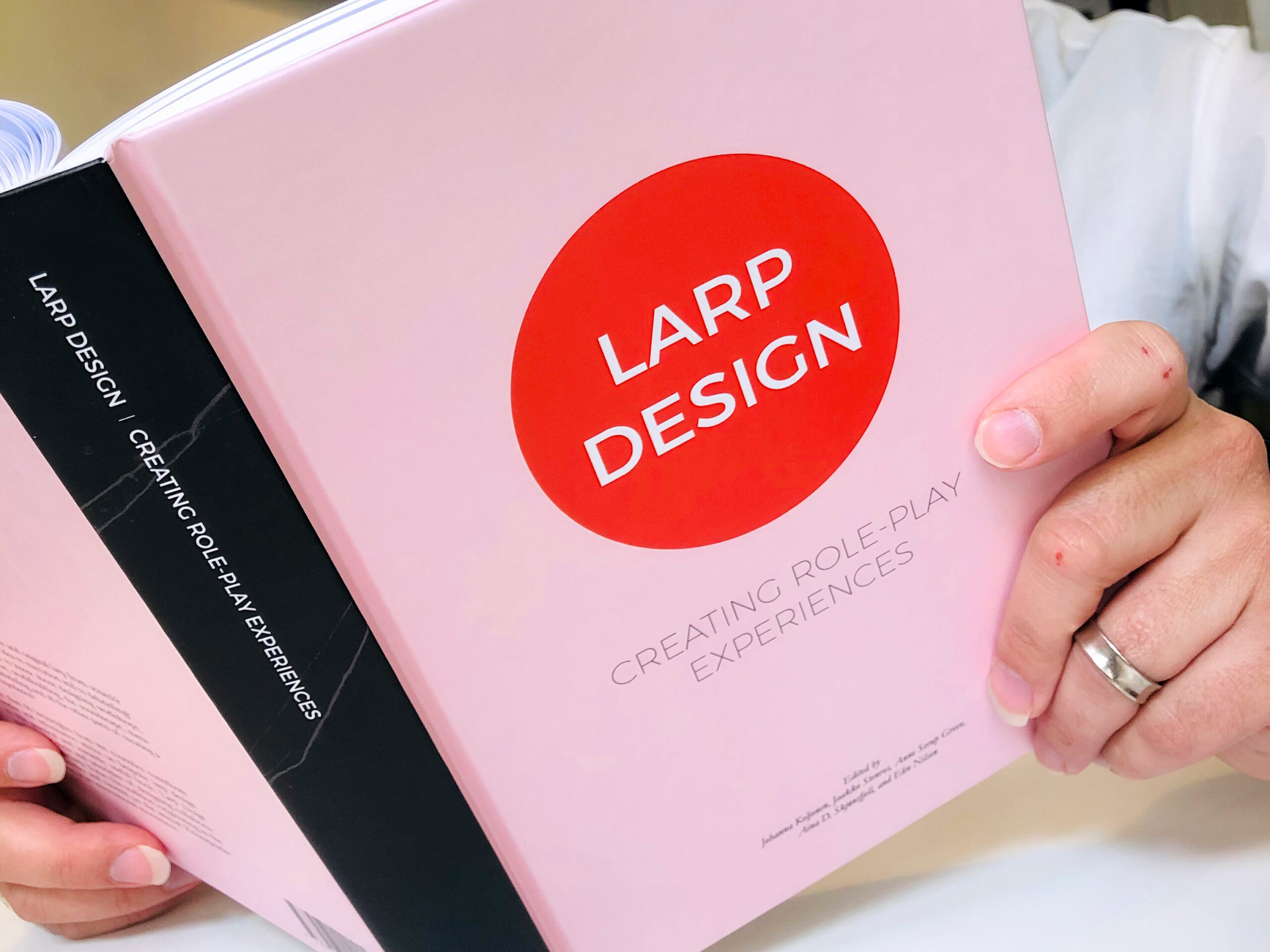

 The Foundation Stone of Nordic Larp (book cover image)
The Foundation Stone of Nordic Larp (book cover image) Just a Little Lovin’ (photo, Frida Sofie Jansen)
Just a Little Lovin’ (photo, Frida Sofie Jansen) Totem (photo, Rasmus Høgdall)
Totem (photo, Rasmus Høgdall)


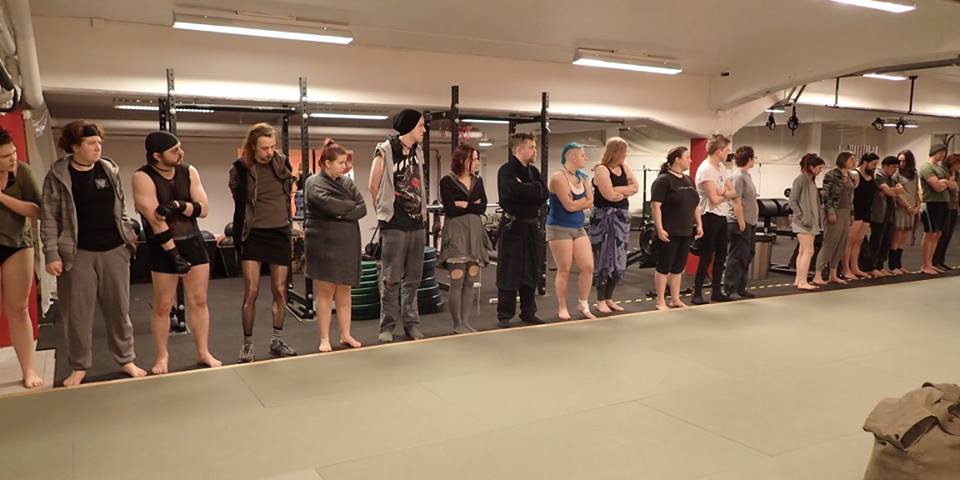





















 Echo and Narcissus (1903) by John William Waterhouse.
Echo and Narcissus (1903) by John William Waterhouse. The Wizard of Oz (1939). Photo by
The Wizard of Oz (1939). Photo by  Tristan and Isolde Sharing the Potion (1916) by John William Waterhouse.
Tristan and Isolde Sharing the Potion (1916) by John William Waterhouse.

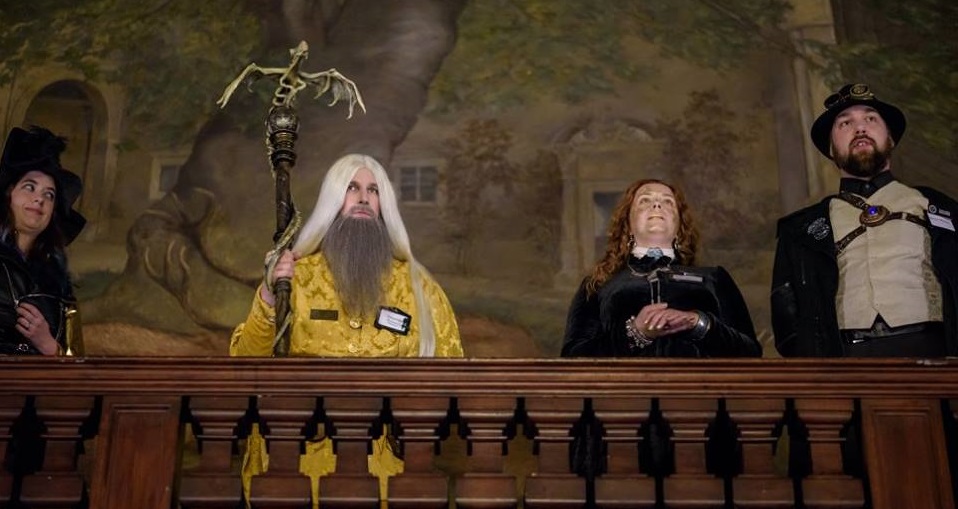



 Inside Hamlet 2017 promotional photo. Photo courtesy of Participation Design Agency.
Inside Hamlet 2017 promotional photo. Photo courtesy of Participation Design Agency.